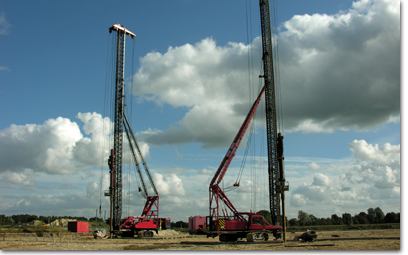The Model P213, piston flow meterand the Model G015 Gear flow meter are specified to provide a high resolution output that can report flow rates to the hundredth of a ml/min. Armed with this level of flow measurement, operators can continually verify an accurate downhole mixture and don’t have to rely on pump RPM or low resolution pressure gauging to try and detect the flow rates of the mix.
A hydraulic fracture is formed by pumping the fracturing fluid into the wellbore at a rate sufficient to increase the pressure downhole. The pressure causes the natural cracks in the formation to expand, allowing the fracturing fluid to enter and extend the crack farther into the formation. To keep this fracture open after the injection stops a solid, commonly a round sand, is injected to hold the fracture open while offering a permeable media for the gas to pass through.
The fracture fluid can be any number of gases or fluids, but is usually a mixture of water and foaming agents, corrosion inhibitors, methanol and cross linkers.
Drilling a borehole or well involves applying downward pressure to a rotating drill bit. This drilling action produces rock chips and fine rock particles that may enter cracks and pore spaces at the wellbore wall, resulting in damage to the permeability at and near the wellbore. The damage reduces flow into the borehole from the surrounding rock formation, and partially seals off the borehole from the surrounding rock. Hydraulic fracturing can be used to mitigate this damage.
Hydraulic fracture enhancement is commonly applied to wells drilled in natural gas-bearing rock which exhibits low permeability. An estimated 90% of the natural gas wells in the US use hydraulic fracturing to produce gas at economic rates.
Max equipment specified:
Depending on the geological nature of the formation, various blends will provide better results. Once an optimal blend has been determined, a chemical additive unit is used to accurately monitor the chemical additions to the high pressure water stream. As many as 5 metered streams may be used to create the required mixture. The Model P213's and G015's low flow rates and high resolution measurement allow the recipe to be held to the exact proportions. If you would like a quote for a similar project, please let us know.


